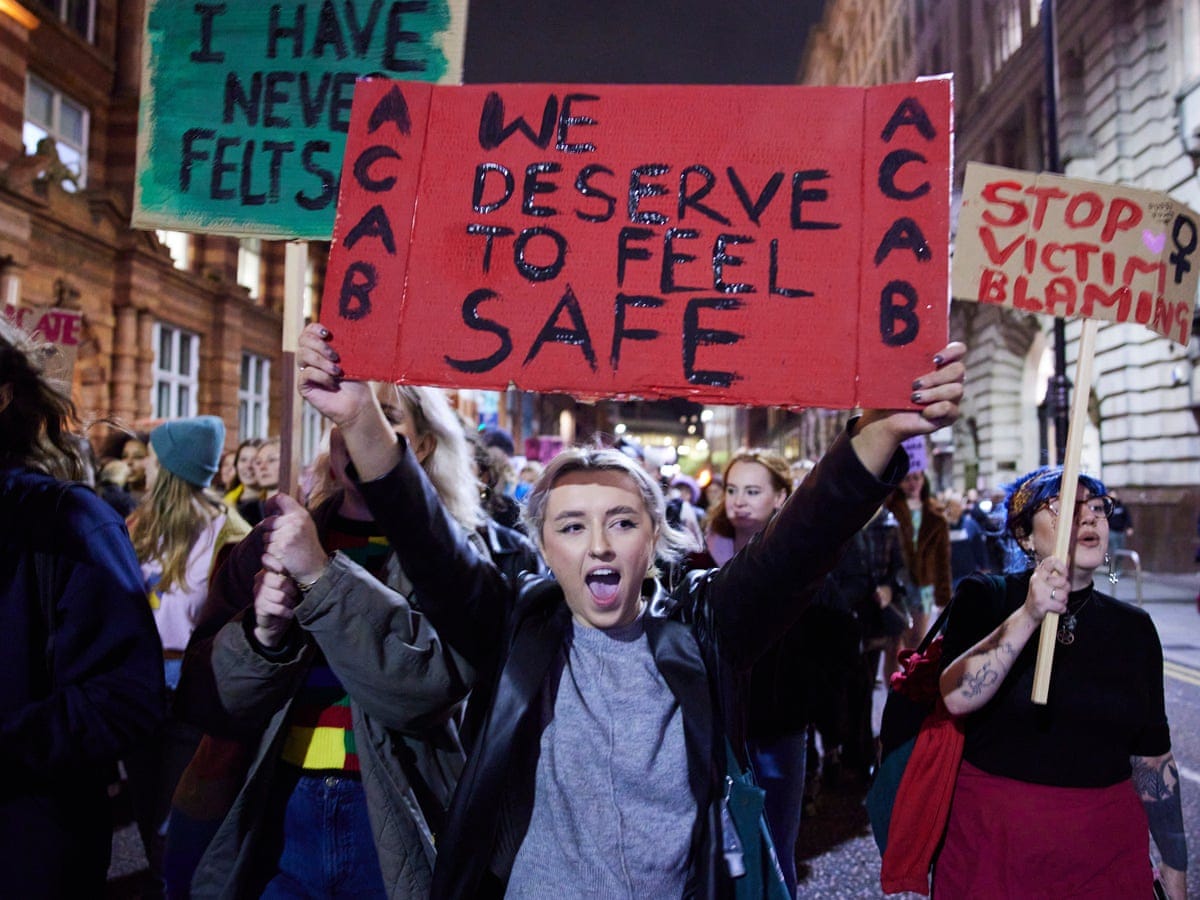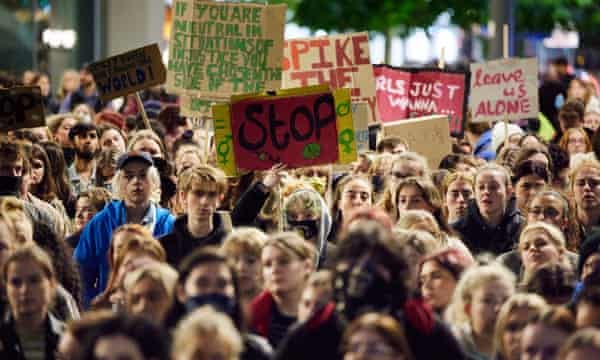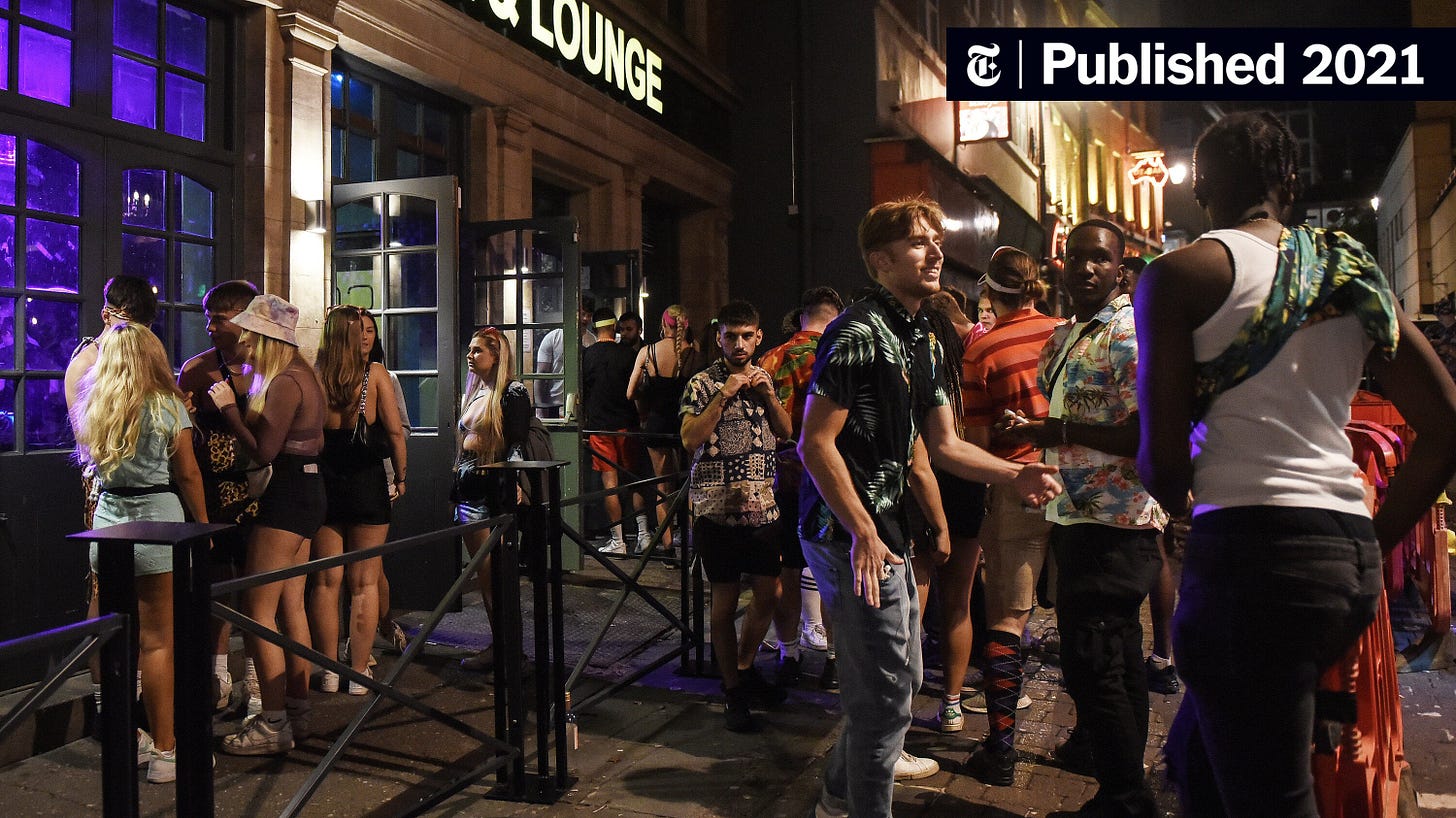I have recently read dozens of news reports on the peril of “spiking,” whereby young women are rendered near-unconscious by perpetrators who spike their drinks with drugs or—more recently—literally inject the women via hypodermic needle with an incapacitating substance. One victim, who lost the ability to walk, talk, or even hold up her head on the night she was spiked, still feels upset when she looks at the scar on her arm where the needle went in.
According to police, thousands of women over the past year have woken up after an evening out with the conviction that something was done to them. Sometimes they claim to have felt a prick or scratch on their arm or leg, though often they felt nothing at all; some have found a mark days later. Often, they don’t remember anything after a certain time in the evening, but they are sure that someone else’s action, not their own drinking or drugging, caused the blackout.
A Sky News article published just before New Year’s Eve, 2022 quoted the UK’s Deputy Chief Constable Maggie Blyth on the scale of the problem and her empathy for victims. “Behind each of these reports,” she emphasized, “is a frightened victim whose night out has turned into a nightmare.” She stressed that “I know from talking to victims of spiking how utterly terrifying it can be.”
The spiking phenomenon has all the hallmarks of a moral panic, an irrational over-reaction characterized by rapidly increasing numbers of “cases” (i.e. claims without evidence), a plethora of near-identical media reports, a growing number of young women demanding they be protected, the willing collusion of police and political leaders, who often express regret that so few convictions have been obtained, and the near-complete absence of skepticism or countervailing opinion about what is being alleged.
Spiking began to be regularly reported in UK papers about 16 months ago. News pieces were typically lurid and inflammatory, intended to galvanize the exhilarating rage that drives threat narratives: one of the early articles referred to “a call to arms from a generation of young women fed up with being afraid.” But they were not fed up: quite the opposite. They were determined to spread the fear to as many other women as possible, and they were buoyed up by the extraordinary deference being shown them.
In October of 2021, readers of The Guardian newspaper were informed of what was already being called a “spiking epidemic” at bars across England, Scotland, Wales, and Northern Ireland. The situation was allegedly so bad that women were taking to the streets in protest, marching with signs saying “We deserve to feel safe,” “Stop victim blaming” and (my favourite), “If you are neutral in situations of injustice, you have chosen the side of the oppressor.”
At one of the demonstrations, the mayor of Manchester, Andy Burnham, was quick to offer his feminist bona fides with a word-perfect statement, in which he declared he was there “to listen” and proclaimed that “It is not for women and girls to moderate their behaviour […] This one is on us – on boys, on lads, on men.” It wasn’t at all clear what boys, lads, and men could do to save their sisters from something that even bar security and police had so far been helpless to punish or even find, but the de rigeur castigation of every living male in the city showed how well tutored Burnham was. Stating that women must not be expected to do anything aside from emoting and making demands of others is usually a good bet.
A speaker at one of the rallies predicted that not a single woman in the crowd would be untouched by spiking. “Every single woman here,” she alleged confidently, “will have a story about them or one of their friends being spiked. Now we can’t even do the age-old trick of covering up our drinks, because they are spiking us with needles now too.” How convenient to have discovered a method of assault even more difficult to prevent than drink spiking. The organizer’s statement about “Every single woman” seems to have been a self-fulfilling prophecy. At the time she spoke, police had recorded 56 incidents of needle spiking in addition to 198 reports of drink spiking. Soon, more and more reports were pouring in to police, and needle spiking—the more novel and shocking thing—began to outpace drink spiking.
By January of 2022, about three months later, UK police were announcing “more than 1,300 reports of needle spiking” in less than six months. By April of the same year, the number was higher (1,382 in five months) and police were being chastised by members of the UK government for not following up more vigorously on reports of this “heinous crime,” though six months earlier police were already said to be taking the reports “incredibly seriously.” Buried in the January report was a comment by Dr. Adrian Boyle, the head of emergency medicine for the NHS, that there was “no hard, reliable data on the prevalence of spiking” and that in the majority of cases where alleged victims had attended emergency departments, tests had found no traces of sedatives.
That detail, however (and past reports such as this one), did nothing to slow the building furor. In March of 2022, claims of needle spiking were already becoming common in North American cities. By June of the same year, spiking panic had spread to France, Belgium, and Holland, leaving authorities puzzled and appealing for vigilance—though without any more evidence than British police had obtained. Soon the “terrifying trend” was reported in Australia as well.
By December of 2022, UK police had received “almost 5,000” complaints of spiking, “with reports of spiking by needle narrowly outstripping reports of drink spiking.” Ahead of New Year’s festivities, police called for anyone who thought they had been spiked to come forward as quickly as possible. Uniformed and undercover police were staked out in bars and clubs in an effort to investigate and combat the attacks.
If needle spiking were a metaphor—and perhaps it is—it would be ideal for our accusatory feminist age. Targeting mainly young women in cities (there have been a few reports of trans and gay men similarly victimized), spiking is akin to sexual assault, leaving the victim angry, shaken, and demanding justice—but, unlike in sexual assault cases, spiking lacks an identifiable perpetrator who might tell an alternative story about consent. Nobody expects a woman targeted in a crowded pub to prove she did not consent to the spike, and her horror in the wake of such an unprovoked attack on her person cannot be gainsaid. Many young women have already seized the moment, using the prominence of spiking to issue far-reaching demands of police, bar-owners, and parliamentarians, including that spiking be made into a specific criminal offence and that bars implement new safety provisions for female patrons.
There are problems, however, with the spiking narrative. So far, there have been few reports of any woman being raped or even mildly man-handled following the alleged spiking. Most women end up at home in their own beds, clothes still on. Are there really so many evil-doers in the world who get off on observing, from afar, victims’ grogginess? If the perpetrators are so heinous, would they not want to do more to their victims than simply erase a few hours of memory?
Moreover, despite thousands of reports to police, continual media attention, enormous police resources, and high-profile pronouncements by lawmakers, there seems to be little or no evidence that any drugs are being administered. Most news items note that authorities are having a hard time getting a grip on what, if anything, is going on as they grapple with basic questions about motive and means. Often it is unclear how the injection was given, whether any drugs were injected, or even whether needles were actually involved.
Other questions aren’t even acknowledged. Have undercover agents caught even a single person in the act? Has anyone been caught on camera giving a spike? Have hypodermic needles been found on any bar patrons? Have hypodermic needles and noxious substances been found in any trash cans or toilets near where a spiking incident is said to have occurred? How is it that so many perpetrators seem able to inject their victims unnoticed and unseen? In short, we have thousands of self-proclaimed victims with very few proven perpetrators. I have seen a (very) few articles about persons “arrested” in connection with needle spiking in the UK, but not one high profile case of a conviction. (In the Netherlands, one man has been convicted and sentenced to five months in prison.)
The most explicit report recently released in the UK does little to clarify matters. At the end of December, the National Police Chiefs’ Council revealed the results of 800 urine samples obtained from alleged victims who were willing to be tested and who had come forward in time to be tested. The results were not a ringing endorsement of the women’s claims. Out of the 800 samples submitted for forensic testing, only 3% were judged to contain drugs that “support a spiking incident.” The majority (56%) contained no drug at all, or a drug of no concern (such as that found in tonic water); 8% contained a medicinal drug with mild side effects; 6% contained an illegal drug admitted to have been taken by the alleged victim, and only 3% contained an illegal drug not declared by the victim (an additional 27% could not be determined because the complainant stopped engaging with police or because the investigation was closed without charges laid).
The illegal drugs identified as “support[ing] a spiking incident” were reported to be mainly ketamine, cocaine, and MDMA. It seems highly unlikely that small doses of cocaine or MDMA, which induce euphoria, pleasure, and heightened sensations, would produce the blackout effects and incapacitation described by complainants. That leaves ketamine, a fast-acting anesthetic and painkiller, as a rather slim possibility. It seems more likely that ketamine and the other well-known party drugs were willingly ingested by the complainants, who did not like to admit to police that they were using them. If the effect on the victim is loss of control and consciousness, why is there no evidence of drugs that induce loss of control and consciousness? The most common drug causing such an effect is alcohol consumed in large quantities.
The reporting of near-identical symptoms without any proven cause is often a sign of mass hysteria, many incidents of which have occurred throughout history, often participated in mainly by young women. Recent hysterias such as allegations of Satanic ritual abuse (as occurred, for example, in Martensville, Saskatchewan) have caused great harm to the accused. Needle spiking, as already noted, is different from former cases of hysteria in that it has so far not involved accusations against individuals. The spiking claim is a generalized attack on a society that has failed to make women feel safe. Coming in the midst of the COVID crisis, it both demonstrated and followed from the contagion of an exploitable fear.
Although I would not be surprised to learn of isolated cases of perpetrators who seek to terrorize young women with needles, it seems unlikely that the number of such persons in the UK alone has increased so dramatically in just over one year. It seems more likely that if the media stopped hyperventilating about this (not clearly) “heinous crime,” the crime might disappear even more quickly than it materialized.






I kept thinking as I was reading this "Don't girls go to bars with a girlfriend or two?" Wouldn't a friend be able to verify an attack and also drag the drugged friend home safely? This whole thing seems to depend on women being alone. Maybe I am way out of date....but when I was involved in bars women would always come with a friend or two, or a guy or two. Maybe things have changed?
Ladies, want to feel safe? Why not go to the bar with a male friend? All of the hoopla about women can do anything men can do, seems to fall apart here.
Thanks Janice for exposing this. I had never heard a thing about it.
Hypodermic needles and syringes are big, and the volume of fluid needed to be injected is around 1 millilitre. Even using the smallest needle size which is 25 gauge they are very easily bent and still sting when the skin is penetrated.
To get through layers of clothing the 25 gauge needs to be long, not a short one that diabetics use. After injection if not directly into a vein, it can take up to 40 minutes for the drug to take effect.